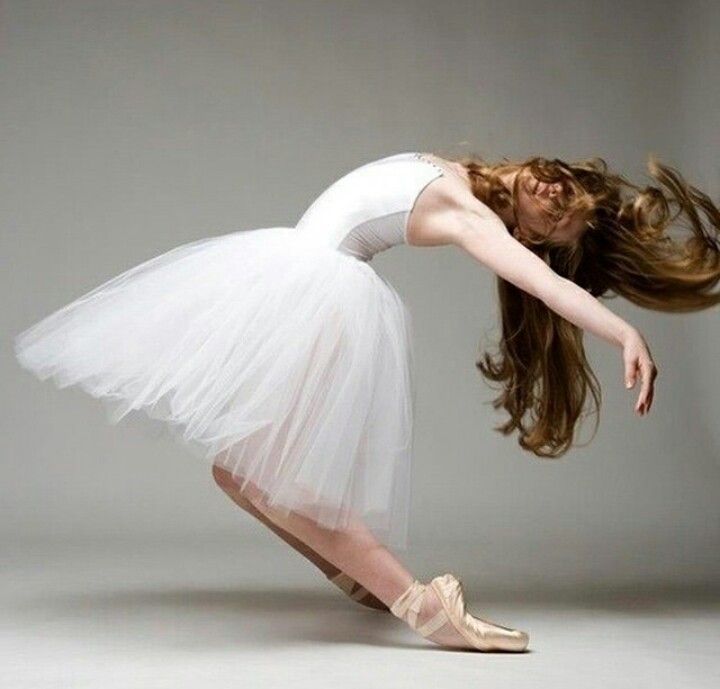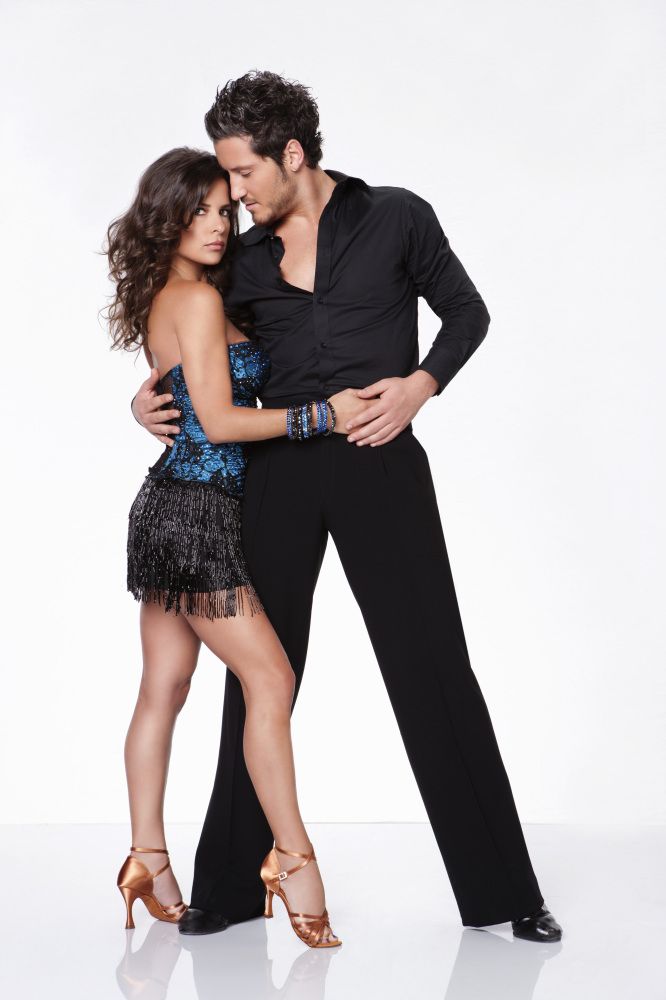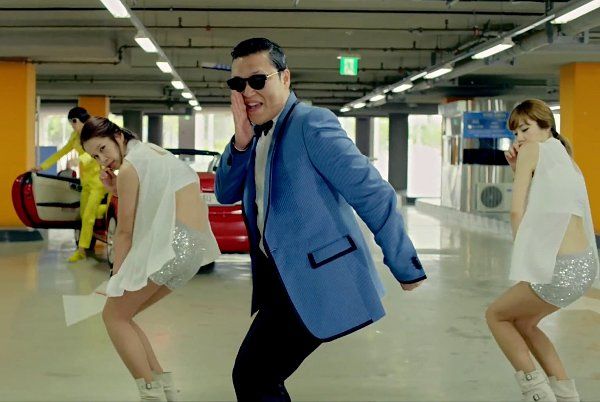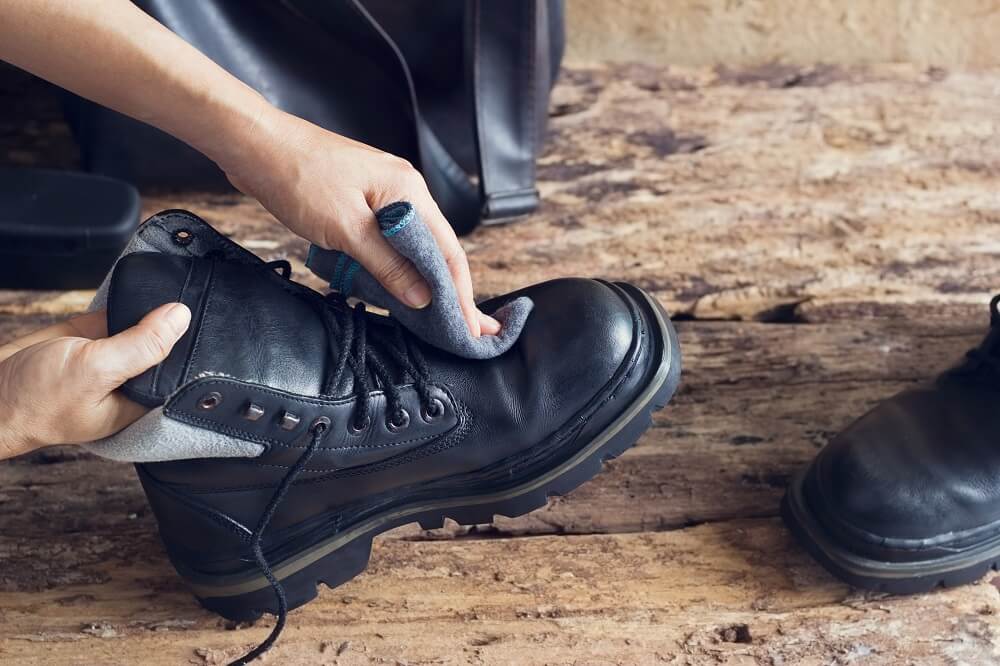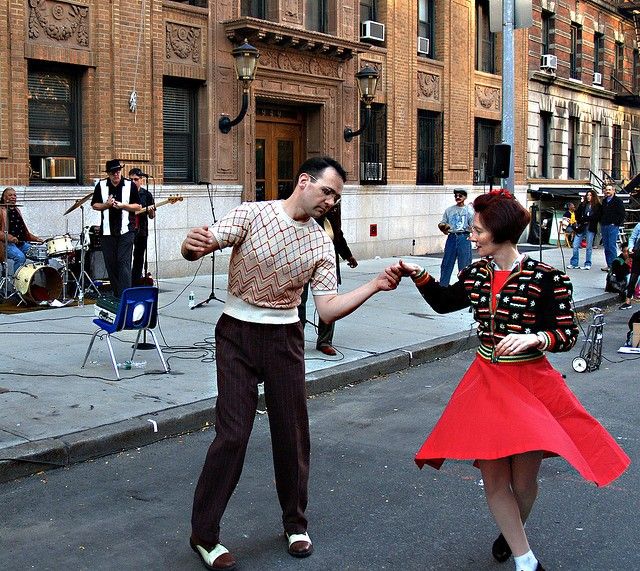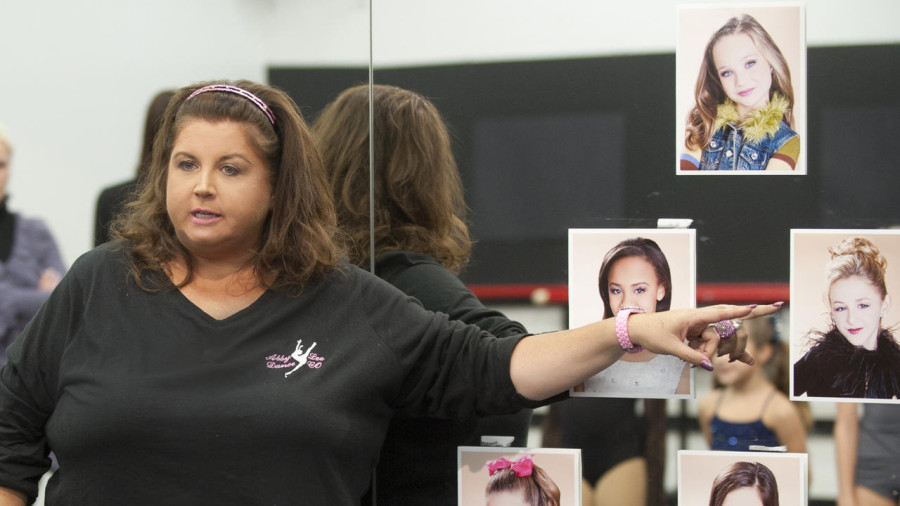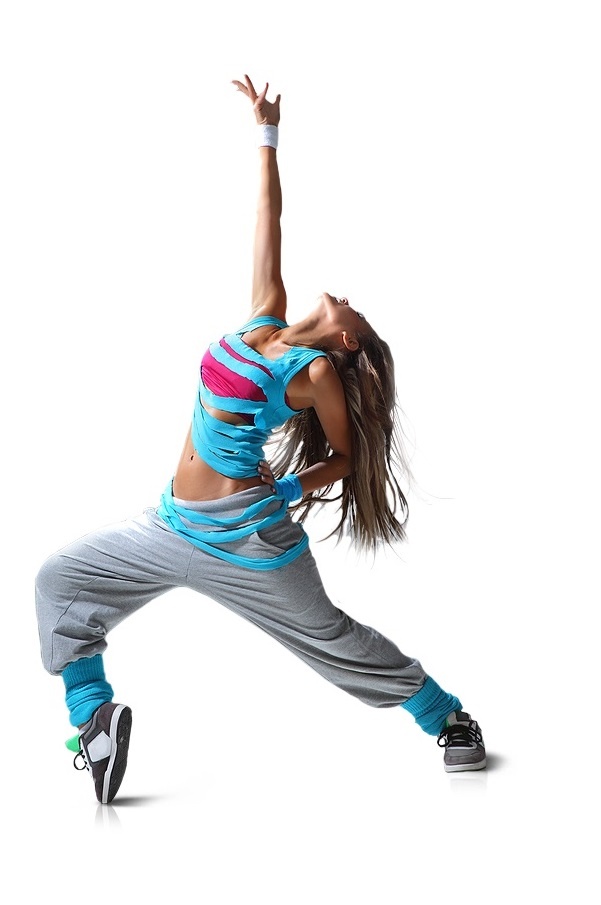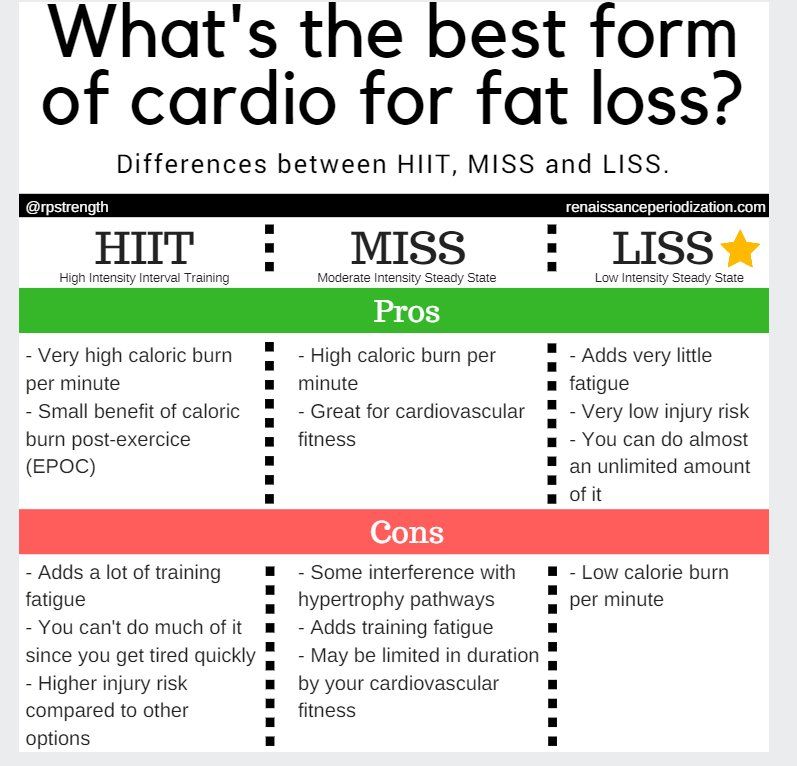How to learn kpop dance at home
How To Learn K-Pop Dances
So, if you’re anything like me, you love a good K-Pop song and the fun, popular choreography that comes with it.
But I have to admit… if you asked me if I’ve ever actually tried learning any K-Pop choreography… I’d embarrassingly have to say “No”.
Even though the dances are meant to be simple to learn, it’s easy to feel intimidated when you’re watching the moves being executed by idols who’ve been training for most of their lives!
So, I decided to find out what it takes to master K-Pop routines AND perform like a legit K-Pop star.
Now, I’m gonna share everything I learned with you.
Keep reading to get all the tips you’ll need to become a K-Pop dancer yourself!
But first…
The term “K-Pop” is an abbreviation for “Korean popular music.”
While the name is pretty general, “K-Pop” is typically used to describe a mixture of East Asian and Western music genres that can be traced back to the 1880s.
Throughout the 1880s-1940s, Koreans were introduced to Western music through American missionaries and radio broadcasts, but it wasn’t until the 1940s when North and South Korea parted ways that K-Pop music really started to thrive.
Many American soldiers remained in South Korea after the Korean War, and started spreading the latest Pop, Gospel, Rock, Jazz, Hip Hop, R&B, Folk, Country, Classical, and Reggae.
As a result, South Korean music artists started infusing their own music with Western rhythms, instruments, vocalization styles, and languages.
And sure enough, Korean singers started getting their big break within Western circles.
Ever heard of The Kim Sisters?
Around 1959, they were the first Korean artists to drop an album in the U.S!
Of course, this music doesn’t sound like K-Pop as we now know it…
The music we currently call “K-Pop” is most heavily influenced by Western music from the 1990s-2010s.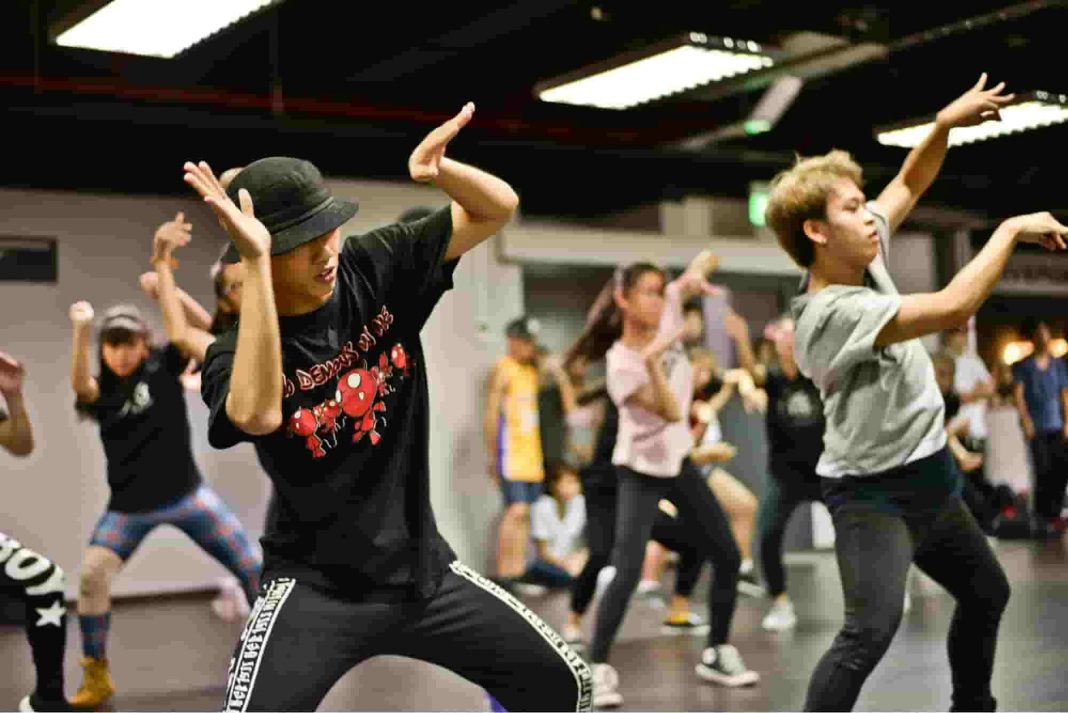
It was during that time period that the internet made it easier than ever for countries to share music with each other.
The Korean government was putting more focus on marketing their music to other countries, but it wasn’t just the K-Pop industry running the show anymore!
Take the boyband Seo Taiji & Boys for example.
Despite the fact that they scored really low during a televised Korean talent show with their song Nan Arayo, their fans went crazy over that same song AND their album.
They posted their music video online and the song made it to the states where new audiences fell in love with it!
Whether it was Seo Taiji & Boys’ unique fusion of Rap, Hip Hop, Rock, Jazz, and EDM, the sound of the Korean lyrics, or their standout fashion sense, thousands of teens and tweens around the world saw their video and looked at them as “idols” – a term that would become the #1 descriptor for K-Pop group members.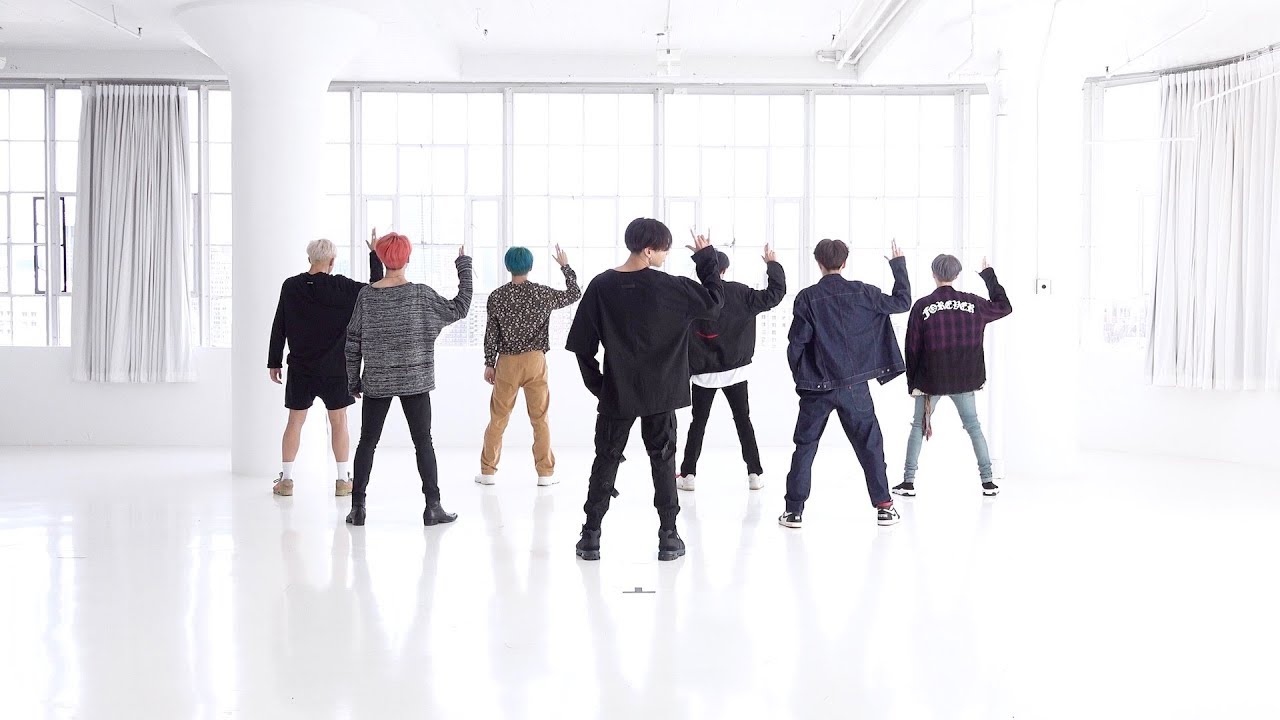
Many other K-Pop artists followed suit and in the 21st century, names like Super Junior, Big Bang, Wonder Girls, Psy, BTS, Blackpink and TWICE were household names.
Of course, one of the main things that sets K-Pop apart is the dancing!
The choreography is full of fun dance moves that are actually easy to learn.
And since the late 2000’s, K-Pop choreography (and the highly produced music videos that showcased it) has heavily contributed to the genre’s virality.
The choreography that went with the chorus of each song was meant to be catchy and attainable, so that anyone in the world could “cover” the choreography just like they would cover the song itself.
Soon, sites like Youtube and Facebook were filled with dance cover videos that gave free advertising to each new K-Pop song.
The moves and combos were heavily influenced by the Hip-Hop-heavy choreography used by 90s/2000s American groups, but K-Pop dances also tended to lean very cute/playful or very edgy – much like the music itself.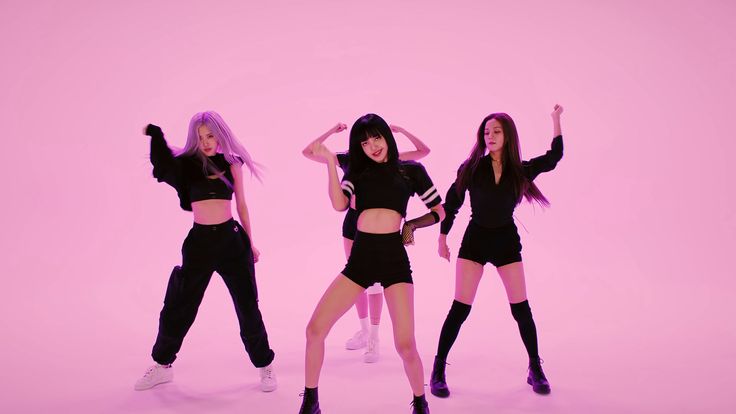
For example, compare how Britney Spears’ and Girls Generation’s choreography look.
They’re both filled with sharp and precise movements, hyper-feminine grooves, and playful gestures. And it's not just one person dancing. You get to see lots of bodies moving in unison!
Many of the early K-Pop groups who were popular in the states followed this formula, but the first modern K-Pop song to get serious radio play featured unisex moves that were appropriate for any age.
Enter “Gangnam Style” by Psy!
Due to that “galloping horse” move, this was the first video on YT to receive over a billion views.
If you want to learn how to dance K-Pop, start by choosing a few groups that you really resonate with!
Then, you can dissect what makes their choreography unique and master their style!
For example, if you really love BLACKPINK’s Lisa, you might notice that she’s all about intricate details and putting serious power into her stage performances.
So, as you’re learning a BLACKPINK or Lisa routine, really focus on those style elements as you practice each move.
Be thoughtful about flicking your wrist to finish a move or tilting your head at a particular moment.
Remember to stay powerfully grounded when you strut, rather than bouncing lightly on your feet.
Once you know which idol you want to look like, you can then focus on mastering the actual dance steps.
If you’re totally new to dance, start by looking for choreography that’s a little more smooth and groovy.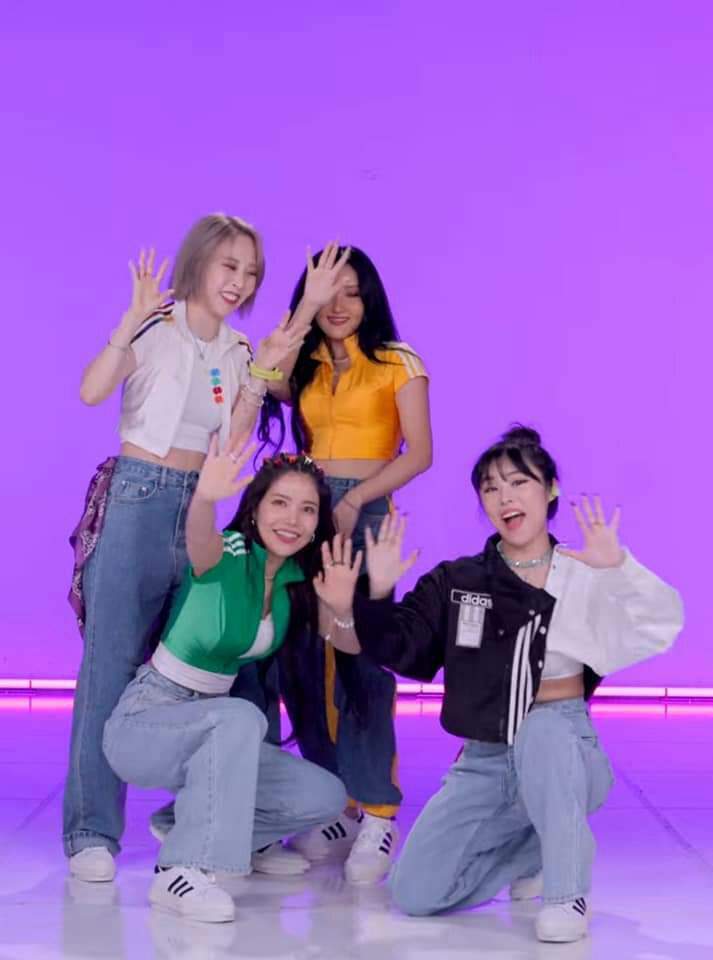
Basically, you want to look for the same types of moves that you’d do at a club or party.
A great example would be the routine from “Pretty Savage” by BLACKPINK.
Related article: Top 10 K-pop Girl Groups in 2022
The chorus section is all about hair whips, booty shaking, and bouncy moves that hit right on the beat. Even if you don’t look exactly like the idols when you do this routine, you’ll still look great!
P.S. If you wanna learn this choreography step-by-step, we have a tutorial on STEEZY Studio. ;)
Click here to learn it!
If you’re further along in your dance training, then you can choose a faster, more precise routine.
Typically, these types of choreographies will test your ability to use speed and control at the right time - all while dancing to more complex rhythms.
Take ATEEZ’ “Say My Name” choreography for example:
During the chorus section, you’ll notice that there's a lot of jumping, quick hand movements, and sudden transitions from fast moves to slow moves.
You’ll need to practice this routine a lot since many of the moves won’t come naturally to you!
P.P.S. You can learn “Say My Name” on STEEZY Studio too! Just click here.
After you know the style of choreography and routine you want to learn, you’re ready to really dive in!
There are a few ways to go about learning K-Pop choreography.
A lot of people learn the routines by studying the highly produced music videos that come with most K-Pop songs.
You can find the videos on YouTube, slow down the tempo, study the movements, and then practice in a mirror at home.
Many other K-Pop songs come with what’s called a “practice video” – basically, this is a video of the music group rehearsing the routine in a clean, simple environment.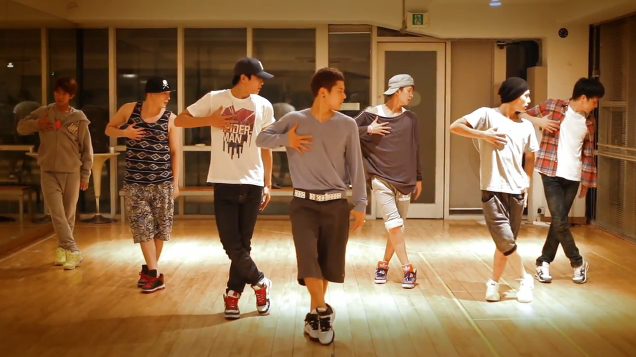
These videos are much easier to learn from since they don’t include all of the fancy cuts/editing that can make it harder to see what the idols are doing.
Here’s an example of BTS practicing their routine for “Fire”:
Of course, when you’re learning a K-Pop routine, you’re not limited to just videos from the music groups themselves.
There are also tons of K-Pop covers artists on YouTube who break down the routines into step-by-step tutorials.
One of the most popular cover artist duos, Ellen & Brian, has nearly 3M followers!
Now, while all of these YouTube options are useful, they definitely come with some learning limitations.
You’ll likely spend a lot of time pausing and rewinding, stopping to check yourself in a mirror, and digging for videos where the content is flipped on screen so that you can copy the instructor directly (basically, if they lift their left arm on screen, you wanna be able to lift your left arm too.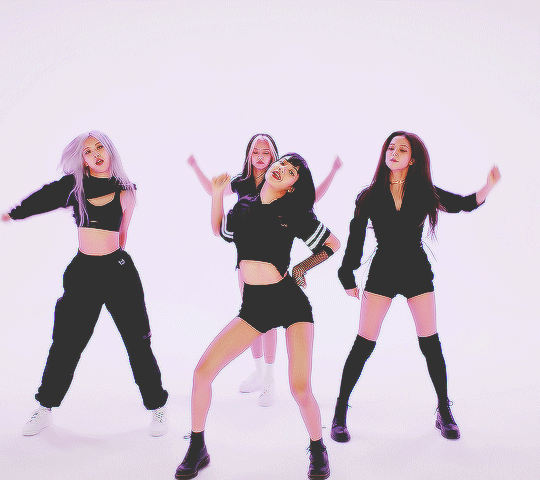 You don’t wanna have to think in your head, “ok, her left arm is going up, but the camera is reversing the image, so I should lift my right arm, right???”).
You don’t wanna have to think in your head, “ok, her left arm is going up, but the camera is reversing the image, so I should lift my right arm, right???”).
Luckily, all of these annoying issues are solved for you on STEEZY Studio!
Unlike YouTube, STEEZY’s a platform made for learning dance routines.
You can flip the video’s orientation with the tap of a button, play tricky sections of the routine on loop while you practice, and use your webcam as a virtual, on-screen mirror so you can see yourself right behind the instructor.
We’re regularly dropping the latest and greatest K-Pop tutorials so definitely check it out here!
And if you’d like to try STEEZY out for free, start with these 10 FREE K-Pop moves classes.
One last tip before you dive into allll the K-Pop routines!
It’s important to keep in mind that K-Pop choreography doesn’t exist in a vacuum.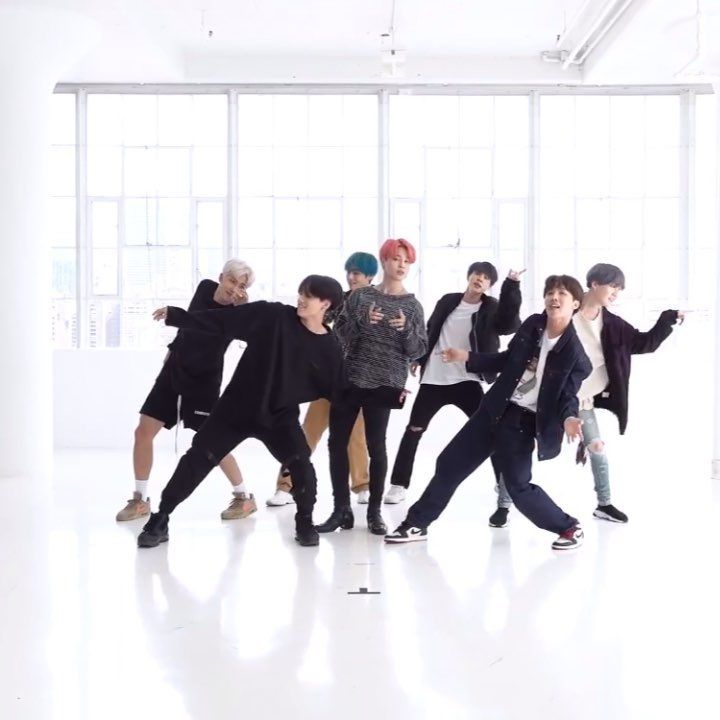
Choreographers from all over the world put together the routines for your favorite groups, and those choreographers have unique styles and dance backgrounds that are worth learning about!
For example, if a certain choreographer regularly creates routines for your favorite group, and that choreographer is a big fan of Jazz dance steps and lots of hair movements, it might be worth it to take their classes directly so that you can perfect those skills.
Here are a few K-Pop choreographers who you can train with on STEEZY:
Choreographer Brian Puspos is known for working with BTS and being one of Jimin’s favorite dancers.
Teen dancer sensation Bailey Sok choreographed for Red Velvet.
Swag queen Rie Hata is the genius behind several NCT, BTS, and Red Velvet routines.
All of these K-Pop choreographers and many more (Ian Eastwood, Lyle Beniga, Ellen Kim…) have classes on STEEZY Studio that will teach you how to dance smooth, sharp, fast, slow – everything!
Planning to make your own K-Pop dance cover video?
Now that we know what K-Pop is and how to do K-Pop dances, the last step is learning how to look the part!
Make sure you:
1.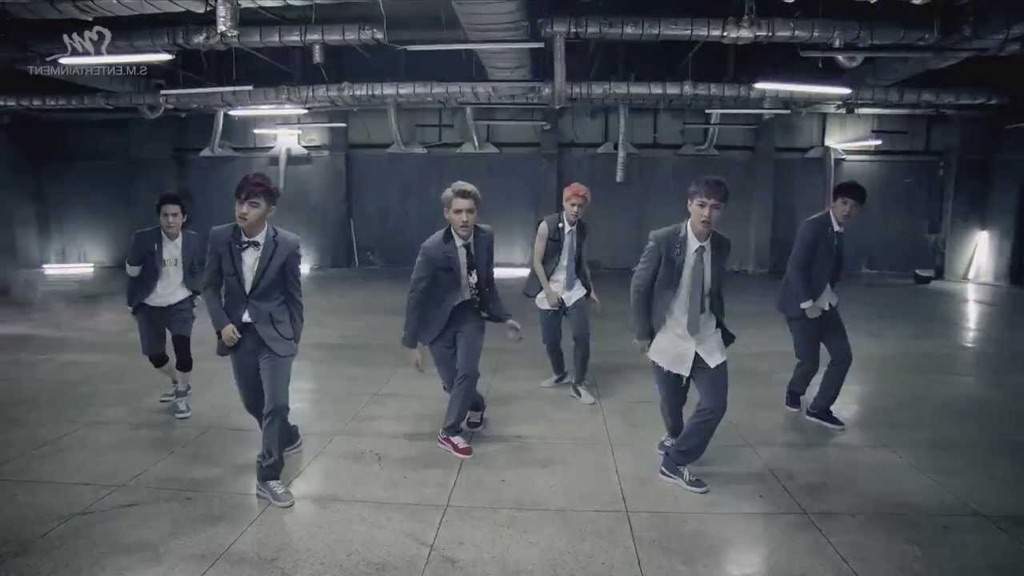 Wear a mix of fitted clothing pieces like skinny jeans and tight tops, combined with clothing that’s loose and baggy. The fitted clothes will show the lines of your body as they cut through the air while the baggy pieces will add more motion to each of your movements. Leggings or shorts with a loose buttoned-up shirt or a skirt with bike shorts underneath are great options. Use the music videos for inspiration.
Wear a mix of fitted clothing pieces like skinny jeans and tight tops, combined with clothing that’s loose and baggy. The fitted clothes will show the lines of your body as they cut through the air while the baggy pieces will add more motion to each of your movements. Leggings or shorts with a loose buttoned-up shirt or a skirt with bike shorts underneath are great options. Use the music videos for inspiration.
2. Have fun with your hair – it’s often part of the choreography! You can search “k-pop hair ideas” on Pinterest to come up with fun ways to style ponytails, pigtails, and braids that will complement your outfit.
3. Set up the “set” you’re going to dance in front of! You don’t need to do something super fancy like the music videos themselves – mainly focus on creating a set that’s visually interesting without being distracting. If you want a city skyline in your background, you can dance on the high floor of a parking garage. You can use brightly colored walls in your town as a backdrop. You can throw some string lights behind you in your bedroom or make use of a color changing bulb. Just make sure there isn’t any clutter in your space!
You can throw some string lights behind you in your bedroom or make use of a color changing bulb. Just make sure there isn’t any clutter in your space!
---
Now, who’s ready to learn some K-Pop moves?
Head over to STEEZY Studio and immerse yourself in the K-Pop world y’all!
Related article: 4 of the All Time Greatest K-Pop Groups Everyone Should Know
10 K-pop Dance Tips & Tricks For Beginners
If you’re new to dancing and thinking of where to start, you’ve come to the right place. K-pop dance is beginner-friendly, free, and can be done at home by yourself.
K-pop dance is a form of cardio exercise that tones your entire body. It is also a perfect way for you to boost your self-confidence as you replicate concepts and personas just like your favourite idols.
As a K-pop cover dancer myself, I would like to share 10 tips and tricks that will help make your learning journey a fruitful and enjoyable one.
1. Choose a suitable K-pop dance choreography
The difficulty levels of K-pop dance choreographies range from super simple to challenging even for seasoned dancers.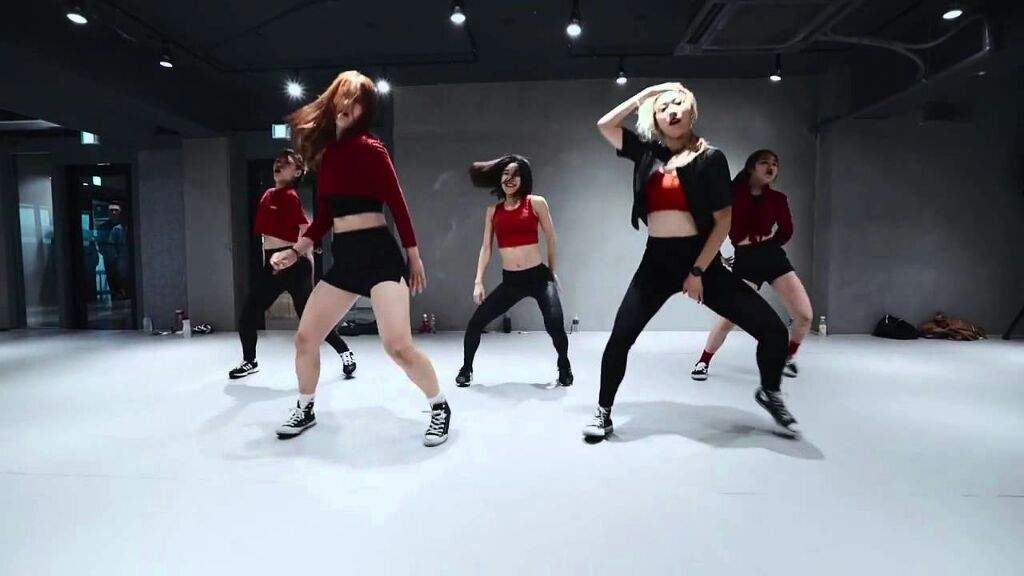 If you are a total beginner with no prior dance experience, start with an easy choreography.
If you are a total beginner with no prior dance experience, start with an easy choreography.
Image adapted from: Big Hit Labels
3 factors can help you determine the difficulty of a choreography: repetition, speed, and style of song.
Repetition refers to how often dance moves are repeated throughout the song. Speed refers to the tempo of the song and how many steps there are in 8 counts. Style refers to the overall concept of the dance, such as “sexy”, “swag”, and “cute”.
Beginner-friendly choreographies usually entail repetitive dance moves without half-counts. In terms of style, cute concepts are the easiest to emulate while powerful concepts tend to require more control and speed.
Here are some examples of beginner-friendly choreographies:
Very Very Very – I.O.I
아이오아이 (I.O.I) - 너무너무너무 (Very Very Very) MV
Mic Drop – BTS
BTS (방탄소년단) 'MIC Drop (Steve Aoki Remix)' Official MV
2.
 Choose a member to copy from
Choose a member to copy from
Image adapted from: BLACKPINK
Most K-pop songs performed by idol groups have dance moves that differ among members, especially during solo parts. Choosing a member to copy from simplifies the learning process.
Image adapted from: SMTOWN
Generally, rappers give off more “swag” when they dance, main dancers deal with slightly trickier choreography for their solo parts, and the visual members of the group focus more on stage presence and facial expressions.
3. Source for good mirrored dance videos on YouTube
One way to learn K-pop dance is through mirrored videos of dance practices, fancams, and live performances. A good mirrored dance video shows a high-quality full-body view with no interruptions for the entire duration of the song.
Image adapted from: K-Pop Dance Mirror
Entertainment companies usually release dance practice videos of title tracks during their idols’ comebacks. Such dance practice videos are perfect learning material because of the clarity in showing both the choreography and overall formations.
Such dance practice videos are perfect learning material because of the clarity in showing both the choreography and overall formations.
Image adapted from: M2
Fancam videos and live performances, on the other hand, are best when you are trying to pick up smaller details such as facial expressions and gestures. These zoomed-in videos are usually not mirrored, but they are good reference for details that you cannot find in dance practice videos.
4. Set small goals and divide the choreography
Dividing the choreography into segments – first verse, chorus, bridge, or even by seconds – allows you to set small goals for each practice session and to plan a rough timeline for yourself. Having small goals and achieving them also keeps you motivated throughout the learning process.
There’s no hard and fast rule that dictates the need to learn from the start of the song. You can start from any part of the song you like, and you don’t have to learn the full choreography if you prefer not to.
5. Find a learning style that works best for you
In K-pop dance, learning styles can differ greatly but no one style trumps another.
Most people would first slow down choreography videos, usually at 0.5x, 0.75x, and 0.9x, when learning. After this step, three variables determine your learning style.
How to break down dance steps
Image adapted from: 여자친구 GFRIEND OFFICIAL
It is natural for seasoned dancers to learn the dance steps by counting, but it might not be as intuitive for beginners. If you find yourself struggling to break steps down into counts, you can try matching the dance moves to the lyrics or beats in the song instead.
Level of detail to capture
Image adapted from: BLACKPINK
You should decide for yourself how detailed you want to be during the initial learning stage. Some choose to learn the overall choreography for an entire part first before moving on to small details such as gestures and gaze.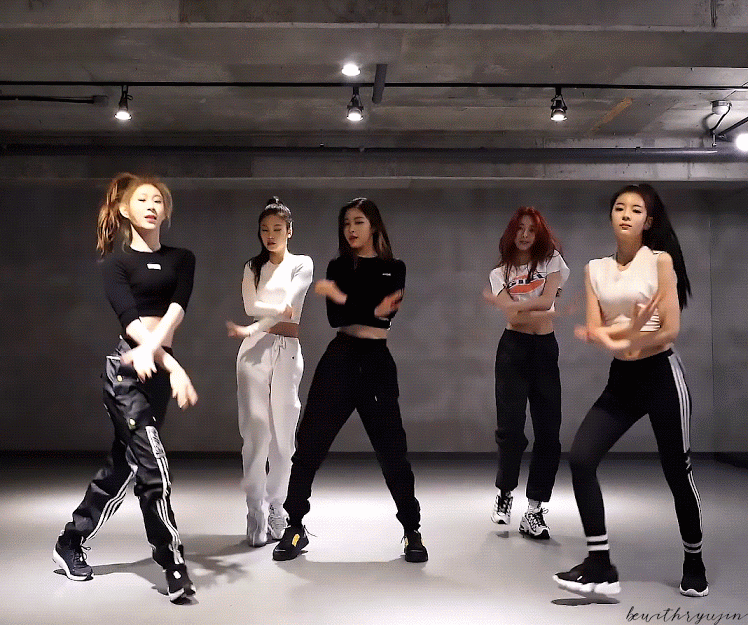
Learning order
Image adapted from: TREASURE (트레저)
Some choose to learn a short part at 0.5x speed, repeat, and only move on to a new dance move after they are able to do it at full speed. Others prefer to learn an entire verse at a slower speed before trying it at full speed. It all depends on what you are comfortable with.
6. Break down difficult steps
In any choreography, there are bound to be moves that seem unfamiliar and difficult to execute.
Break it down by observing which body parts are used to execute it. Key body parts to note are the chest, arms, hip, and knees.
Image adapted from: Stone Music Entertainment
Mimic the dance movement while focusing on the different body parts involved. Through trial and error, you will be able to identify which is the key body part that guides the rest of the body in executing the difficult dance move.
Certain dance moves such as chest isolations and body waves appear often in K-pop dances in nuanced variations. Therefore, having the habit of breaking down difficult steps will gradually increase your learning speed and improve your execution of such steps.
7. Refer to dance tutorials
Dance tutorials are helpful when you find yourself struggling with breaking down the steps by yourself.
However, dance tutorials might not always follow the exact way idols execute dance moves. They are usually also member-specific, so you might not be able to find a tutorial for solo parts of the member that you are covering.
Here are a few YouTube channels with easy-to-follow K-pop dance tutorials:
Lisa Rhee
Here is her tutorial for BLACKPINK’s How You Like That:
BLACKPINK - 'How You Like That' - Lisa Rhee Dance Tutorial
LEIA
Here is her tutorial of TWICE’s More & More:
[FULL TUTORIAL] TWICE - 'MORE & MORE' - Dance Tutorial - FULL EXPLANATION
Ellen and Brian
Here is Brian’s tutorial of TXT’s Can’t You See Me:
TXT - 'Can't You See Me' Dance Tutorial (Explanation + Mirrored) | Ellen and Brian
8.
 Learn facial expressions and lip-sync parts
Learn facial expressions and lip-sync partsImage adapted from: BLACKPINK
Facial expressions add flair to the dance. The best way to learn facial expressions is by watching videos of live music performances with close-up shots of the idols.
While lip-syncing is not a must for K-pop dance covers, it helps you emulate the idol persona better and makes your cover more well-rounded. For those who are unfamiliar with the Korean language, you can look for romanised song lyrics on websites such as Color Coded Lyrics and KPOPEASY.
9. Record and review your dance practices
Consolidate your learning and track your progress over time by recording your dance practices. Always ensure that you stay in frame and that the camera captures your full body. Try using a tripod or placing your camera on a chair.
If you don’t have a full-length mirror at home, a dance practice video is essential in showing how your entire body looks when you dance.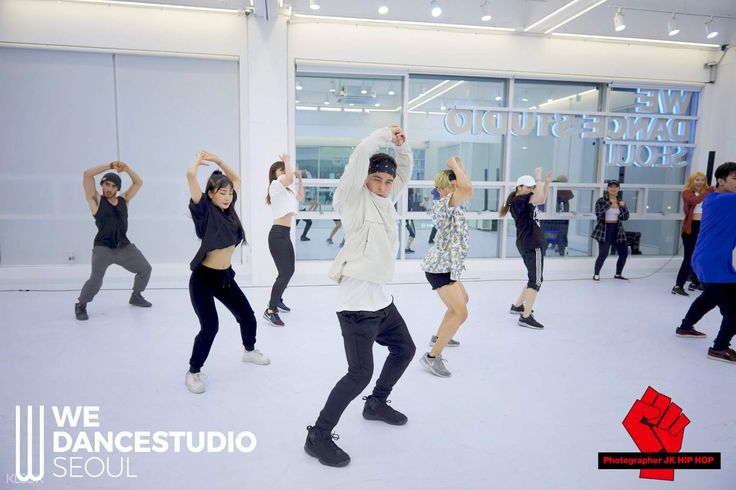 Recording yourself will also help you discover your dancing “bad habits”. For example, I only discovered my habit of staring at the ground after I reviewed my recorded dance practice recordings.
Recording yourself will also help you discover your dancing “bad habits”. For example, I only discovered my habit of staring at the ground after I reviewed my recorded dance practice recordings.
Image adapted from: Victoria Ow and MNH Entertainment
You can also create side-by-side comparison videos of your dance practice vs. the idols’ original choreography. This helps brush up your accuracy and timing when executing moves.
10. Explore different K-pop dance styles
Certain dance styles have go-to moves. After you pick up a few choreographies of the same genre, you’ll be familiar with it. But don’t limit yourself to just one genre – move out of your comfort zone instead.
Image adapted from (clockwise from top-left): APRIL, JAY PARK, ATEEZ and Stone Music Entertainment
K-pop dance offers a wide variety of concepts. It is an opportunity to branch out to other dance genres, such as street jazz, urban, and hip hop, all of which are increasingly being integrated into K-pop dance choreographies.
K-pop dance for beginners
With K-pop dance, there is no need to worry about techniques or basics because it will come to you naturally over time with practice. The plethora of concepts and choreography difficulties will allow beginners such as yourself to be motivated to grow as a dancer.
The ultimate beauty of K-pop dance lies in the fact that there will always be a space for anyone at any stage of their dance journey. My K-pop dance journey for the past 8 years has been deeply fulfilling and I am sure that it will be the same for you too.
Here are other Hallyu-related articles:
- K-pop comebacks in August 2020
- Korean Instagram photo tips
- Underrated K-dramas
- Romantic K-dramas
- Top K-drama OSTs
Cover image adapted from: BLACKPINK
Dancing Class: Kpop, Ballet
on the App StoreDescription
Do you start dancing when the song is playing? Dance is your passion?
Everyone can learn to dance.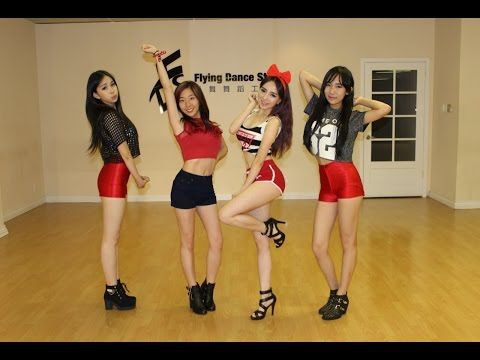 The Learn Dance app helps all dance lovers learn how to dance in a convenient location. You can dance in groups or alone anywhere at any time of the day.
The Learn Dance app helps all dance lovers learn how to dance in a convenient location. You can dance in groups or alone anywhere at any time of the day.
Simple video tutorials help users learn how to dance very easily. You can choose any dance form around the world. Ballet, Jazz, Hip Hop, Contemporary, Ballroom, Flamenco, Latino, African, Bollywood, the list goes on. There are hundreds of different dance styles. Choose your favorite and start learning!
The Learn Dance app has dance lessons from the world's best instructors. The Learn dance app has several handy features. You can customize the features to study better. You can control the speed of the video lesson, view classes by section, and repeat the lesson.
Dance lessons are available for all ages. Do you think it's too late to start learning? It's never too late to dance. There are separate tutorials for beginners, intermediates and experts respectively. Choose your program and track your progress. Doing what you love keeps your mind and body healthy. Invite your friends, start dancing sessions today. Make your evenings more fun!
Invite your friends, start dancing sessions today. Make your evenings more fun!
How to learn to dance at home?
1) Choose your favorite dance style
2) Decide on a program or technique - beginner, intermediate or expert.
3) Just dance!
4) Practice - the more you do it, the better you do it.
Dancing is fun. Learning to dance is more fun. Download the Learn to Dance app now!
Terms of use
http://riafy.me/wellness/terms.php?iOS&dark&apptitle=learndance
Privacy Policy: http://riafy.me/wellness/privacy.php?iOS&dark&apptitle=learndance
Version 1.1.7
Bug fixes and performance improvements
Added content in other languages
Subscriptions
Learn Dance Half Yearly
6 months access to all premium features
3,150.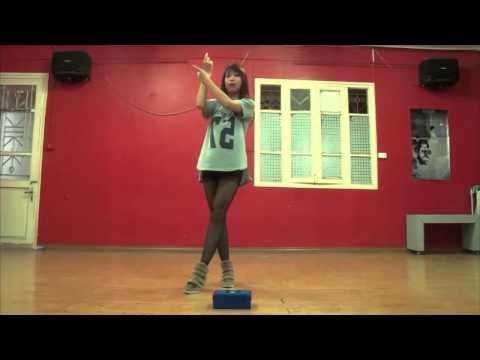 00 RUB
00 RUB
Developer Riafy Technologies Pvt. Ltd. indicated that, in accordance with the application's privacy policy, data may be processed as described below. Detailed information is available in the developer's privacy policy.
Related with user data
The following data may be collected that are related to the user's identity:
- Contact details
- Search history
Unrelated with user data
The following data may be collected, which is not related to the user's identity:
- Usage data
- Diagnostics
Sensitive data may be used differently depending on your age, features involved, or other factors.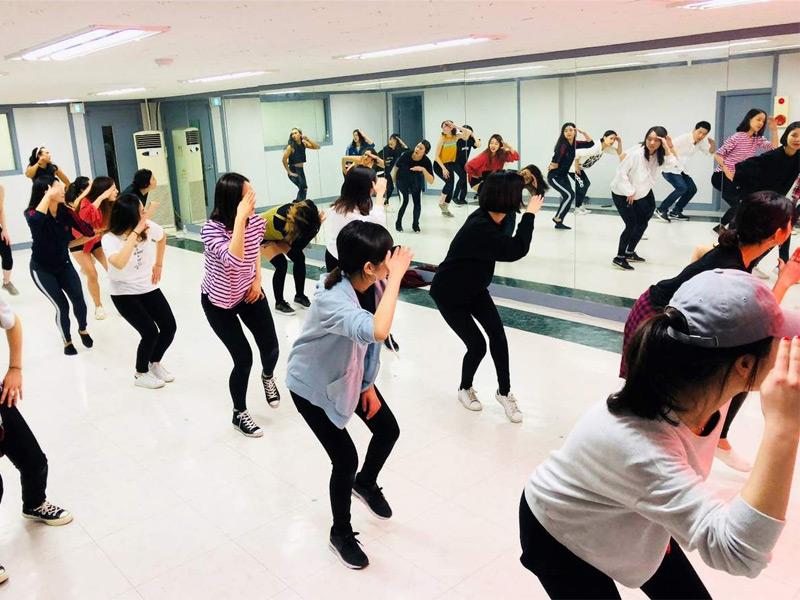 Read more
Read more
Information
- Provider
- Riafy Technologies Private Limited
- Size
- 77.4 MB
- Category
- Entertainment
- Age
- 4+
- Copyright
- © 2021 | Riafy Technologies
- Price
- Free
- Developer site
- App Support
- Privacy Policy
Other apps from this developer
You may like
Mamita Dance0005 At the start, you always want to get a quick result. When it doesn't happen, the hypothesis arises that everything takes time. After a conditionally acceptable time, humility comes to mastering pair dances, which, perhaps, is not given, and I will just do what I learned somehow.
When it doesn't happen, the hypothesis arises that everything takes time. After a conditionally acceptable time, humility comes to mastering pair dances, which, perhaps, is not given, and I will just do what I learned somehow.
This is the most common story of those who believe that the fact of attending pair dance classes is enough to learn how to dance.
Absolutely not. If you want to really dance well, you have to make an effort outside of the dance class. A good teacher will definitely be needed, but the initiative should be on your side.
1. Listen to music
The most common and accessible advice that is given already in the first lessons. And it definitely works. Music creates a certain atmosphere of the dance and intuitively you want to move to it. It doesn't matter where you listen to music - in the car, on headphones while walking or doing household chores.
An addition that will help you dance better is your active participation in the music. Sing along, dance or simply beat musical accents with any free parts of the body. In the subway, for example, it is enough to tap out bright moments with your fingers, in the car to sing along with sounds, and at home you can jump for pleasure.
Sing along, dance or simply beat musical accents with any free parts of the body. In the subway, for example, it is enough to tap out bright moments with your fingers, in the car to sing along with sounds, and at home you can jump for pleasure.
2. Watch videos of good dancers
It's complicated, but also obvious. It’s more difficult, because without recommendations from more experienced dancers, unfortunately, it’s not so easy to find a good quality video on the net (I mean not the resolution quality, but the content itself).
Meaningful video viewing is about building an understanding of HOW dancers make a particular impression on a partner or viewer. Technology is at the heart of everything. Understanding how the pros do it is a big step forward.
It is important to distinguish a show from a disco dance, a choreographed performance from an improvisation, a stylized dance from an authentic one, etc. Ask for recommendations and dance instructors will always upload a couple of videos of worthy landmarks.:strip_icc():format(jpeg)/kly-media-production/medias/98944/original/120103akpop.jpg)
Tango Z. Showreel.
Online modern tango courses
Tango nuevo is the most advanced version of tango. We can quickly learn to dance from zero to a steep level.
| View details |
3. Dance in salsatecas/milongas/discotheques
A very delicate moment when it is worth coming to the first party. From a technical point of view, most students in 1-3 months have a sufficient set of figures and techniques to come and dance calmly. Psychologically, the same moment can be stretched out for an indefinite time. After all, it is imperative to “not lose face”, “learn more figures” and be sure what to do in case “there is an unfamiliar movement”.
In fact, the party goers don't care (except for a small layer of non-professional teachers who want to help inexperienced dancers by treating them as customers in the future). It is important to come and try dancing after a month of classes. You can only with friends or guys from your group. This will be enough to feel the adrenaline and inspiration from the dance.
You can only with friends or guys from your group. This will be enough to feel the adrenaline and inspiration from the dance.
4. Dance with partners or partners not of your level
The conventional wisdom that you need to practice in groups of your level does not stand up to the test of experience. Perhaps now your eyes widened in surprise, and you want to meaningfully read the phrase again. Yes, you saw everything correctly: when you dance with a partner of your level, you don’t grow anywhere.
It's important to understand that not only does it work one way and you have to dance with cooler dancers, but it works even more effectively the other way. It is no coincidence that teaching pair dances dramatically raises the level of the teacher himself. You have an endless stream of very beginner dancers.
How it works. A more experienced partner needs to be "stretched". It's easy and obvious. With beginners, you need to take more initiative on yourself, see the general pattern of the dance more widely, turn on and insure more, try to be an example and be more careful. The quality of interaction begins to grow significantly. And wonderful partners too.
The quality of interaction begins to grow significantly. And wonderful partners too.
Dancing with partners of your level doesn't make you grow. Dance with both beginners and more advanced dancers
Dominican Bachata Women's Style Online Course
Want to learn how to hypnotize those around you with the most appetizing part of your body? On the course we will tell you all the secrets.
| Interesting |
5. Learn to dance for a partner and for a partner
Turks and Argentines are one of the best partners in the world. In Russia, partners are highly valued. Why? The answer is simple. In Argentina and Turkey, it is not questionable for men to ask another man to lead in one piece or another and give feedback on the quality of the lead. For them, it will be a great shame to hear moralizing from a partner, or even more so to be known in the community as an insecure partner.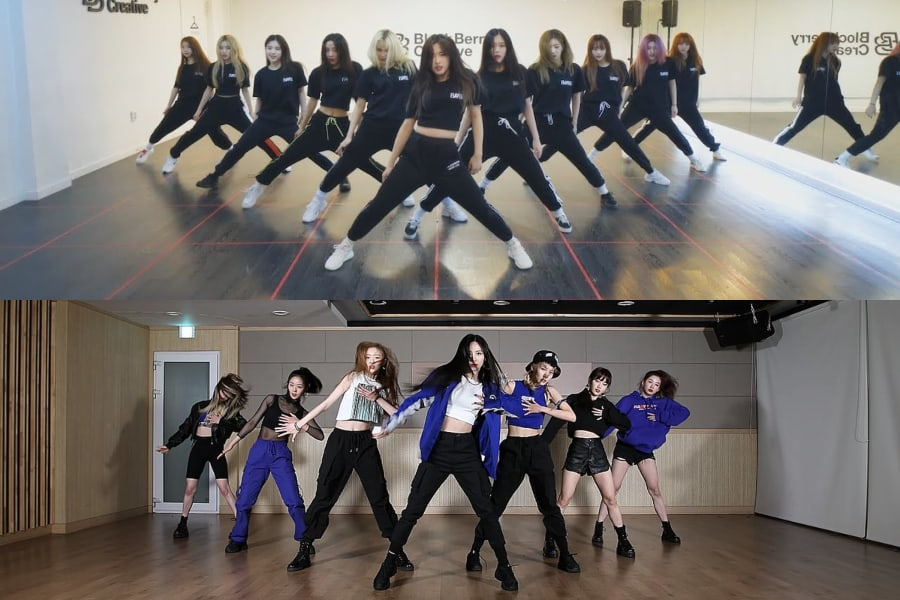
In Russia, due to the constant, often far-fetched, opinion that there are more women in pair dances, partners calmly get up and study their partner's part. Such partners then grow into very cool dancers and teachers. In no case do this at parties, only in class. Here we are talking only about the learning strategy. At parties, be yourself.
6. Do not memorize the links
Always try to look deeper and understand the through principle and idea of movement. Understanding what and how is done will make it possible to independently generate any sequences and chips.
Human memory is limited and there will always be a moment when something will escape and your repertoire will be limited by the size of RAM.
In Argentine tango, for example, there are seven levels of movement construction that, when mastered, will allow you to make millions of combinations. And how many dance sequences can you really remember? In rueda, more than 150 figures dance in a rare circle.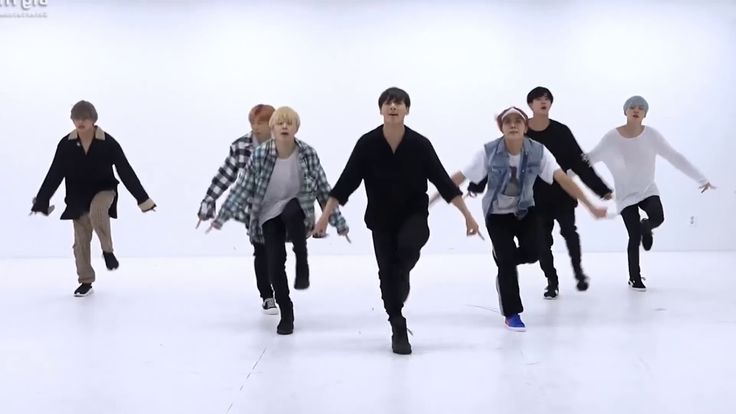 It's hard to keep more in mind.
It's hard to keep more in mind.
7. Develop your body
Many years of experience in teaching pair dance shows that as soon as everyone pairs up in a class, any progress in individual style ends. But it is the individual style that distinguishes everyone at the disco: partners change, and style is always with you.
The body as the main instrument of dance must be very plastic, responsive and emotional. Surprisingly, not all pair dance schools have a general physical warm-up. It is vital to tune the body and understand how it works.
You can always train extra and concentrate more on the basic steps, as their true value is as body work. The sequence of steps is, in fact, the simplest thing that can be in pair dancing. The quality of individual performance determines the craftsmanship.
8. Try on the images of inspiring dancers
A psychological life hack for those who have already mastered the steps, but still feel that there is not enough brightness and drive.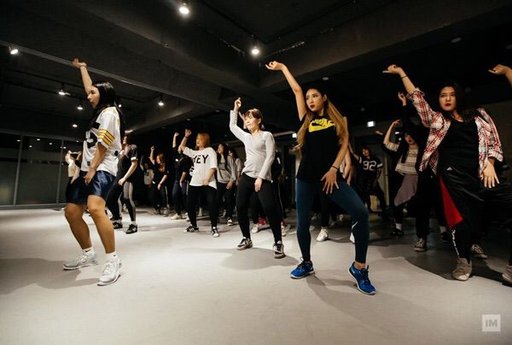 Most are terribly afraid of being someone else's "clone". Here the action is the same as under the influence of hypnosis - the more you resist, the more you plunge into an altered state of consciousness.
Most are terribly afraid of being someone else's "clone". Here the action is the same as under the influence of hypnosis - the more you resist, the more you plunge into an altered state of consciousness.
With a high degree of probability, you are already dancing like someone's "clone". A meaningful fitting of someone else's image is that you mentally take the image of the one who inspires you (inspiration is critical in this case) and "put on" yourself. Then you start dancing and trying to feel in general how it is to be able, for example, to be the best partner or the sexiest partner in a disco. This is much more difficult than it seems. But it works extremely efficiently.
9. Dance to offbeat music
Habitual rhythms keep you tight. Tango salon or speedy timba leave little room for experimentation and fantasy. Pattern dancing is always noticeable and is reserved for beginners.
The truly new is born outside of the usual.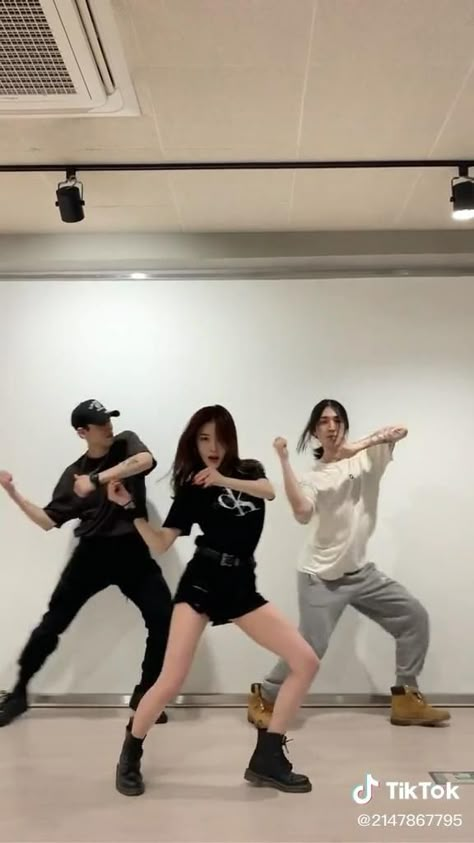 Look for places to experiment. If there is no place, organize self-training. The main thing is not to get carried away, because music determines the style. We bring something new to pair dances, rather than trying to change them.
Look for places to experiment. If there is no place, organize self-training. The main thing is not to get carried away, because music determines the style. We bring something new to pair dances, rather than trying to change them.
Search, improvise, don’t be afraid to go beyond, develop in different directions, be inspired by music atypical for the style
10. Try your hand at basic dance directions
dances exist according to their own non-choreographic laws.
This is the deepest delusion, which has turned into a ceiling for the qualitative development of pair dances. After all, all professional dancers, for example, in salsa or bachata, build their ideas on the basic choreographic principles.
Do not think that choreography is applicable only on stage. Any meaningful movement of the body can be choreographic. In general, try classical or modern choreography. Basically, hip-hop can work too.
11. Look for battle sensations
Pair dances return us to an active position of manifestation of our body. As in the days of our ancient ancestors, we impress the members of the opposite sex by how dexterous, hardy, sexy, etc. we are. Modern laws of the jungle in the entourage of big cities.
If you look around the dance floor, it becomes clear that the majority are clearly herbivores (not in the sense of vegetarians, but in relation to those around them). I am sure that predators are always more interesting in terms of the attractiveness of the image - try to find a counterbalance among herbivores, for example, a cat woman or a lion man.
The conversation is about an internal position, not about aggressiveness. Lability and lack of control are inherent in adolescents, and not in adult self-sufficient people.
Accordingly, even a training or friendly battle gives, on the one hand, practical skills - to make a bright sequence of movements, bring an idea to a climax, show a spectacular feature, on the other hand, develops the psychological basis of the dance - self-confidence, resistance to extraneous attention, self-control and self-control in complex elements.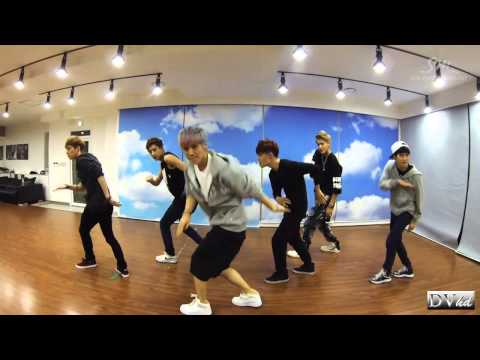
12. Communicate with professionals
The environment shapes the internal position. Basically, real passionaries of the dance community are ready to openly talk, discuss and support the development of dance in every possible way. Universal principles and the ideas they articulate have a much longer and more practical perspective than meets the eye.
Accept that, for example, behind the words "listen to your partner" is not only a beautiful metaphor, but also a practical skill to literally listen to your partner. At the same time, always treat every thought, even the most respected teacher, as a private opinion.
Your skill will lie in finding the scope of the idea even in conflicting opinions. Most often, the contradiction is speculative and the truth lies in the angle of perception or situationality.
Your dancing growth will stop sooner or later. This can happen at the level of three basic steps or years of experience in teaching and show performances.

